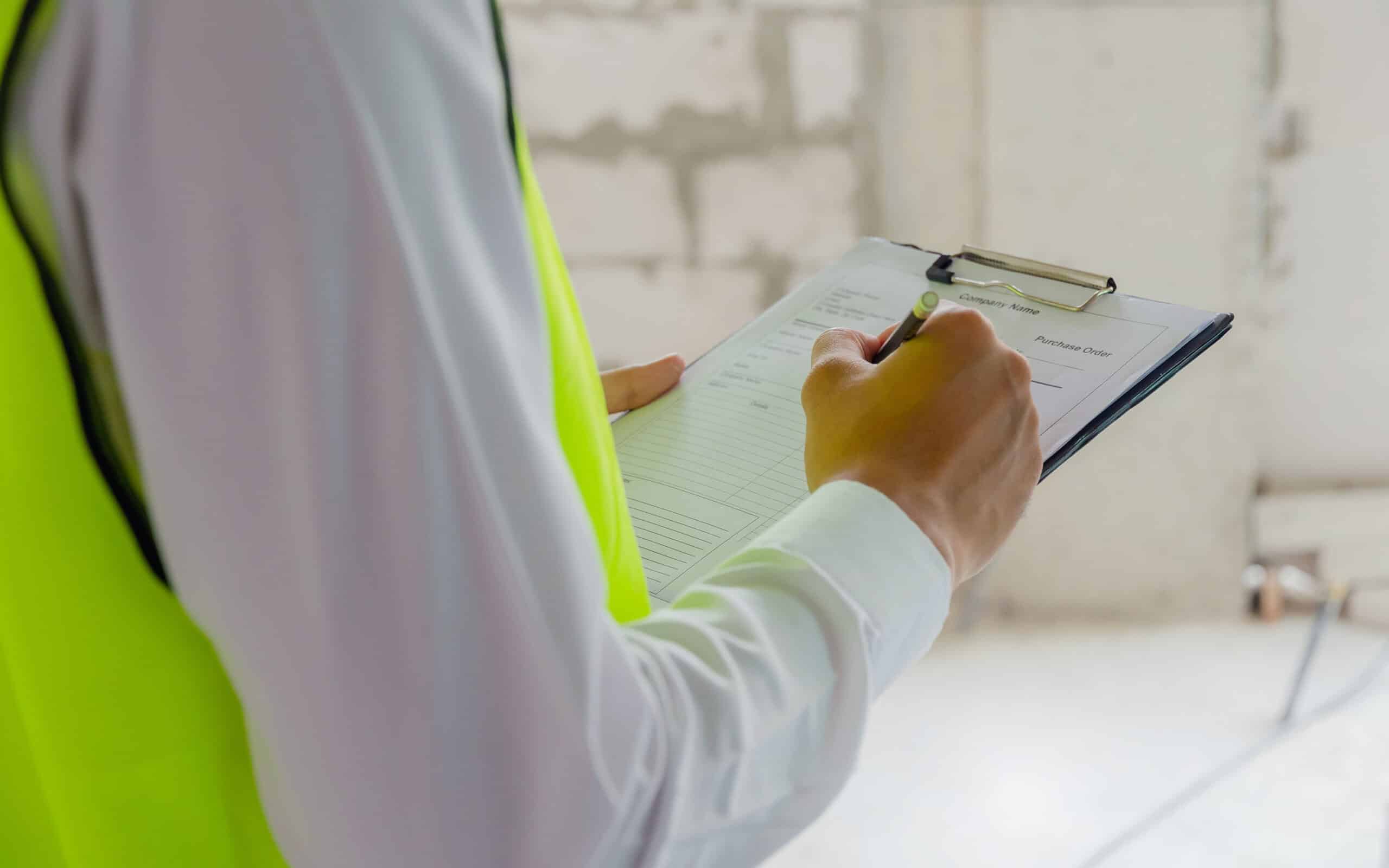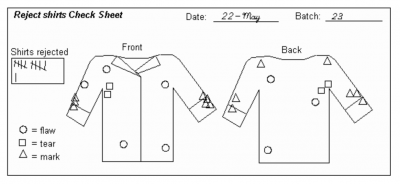
KISS is a strategy for keeping things simple until you need more complex tools. A check sheet is applicable for such a strategy. Typically, data is recorded by hand in a simple form for an early analysis of your process.
Let’s see how we can make and use this tool.
Overview: What is a check sheet?
A check sheet is a form used to collect real-time data at the location in which it is being generated. This can be on the shop floor, in the finance department, or out in the field. You can use it for both quantitative or qualitative data.
Kaoru Ishikawa, famed Japanese quality control expert, identified four primary uses for check sheets:
- To visualize the shape of the probability distribution of a process
- To quantify defects by type
- To quantify defects by location
- To quantify defects by cause
Let’s look at an example of each.
Probability distribution:

Check sheet for probability distribution
Defects by type:

Check sheet for defects by type
Defects by location:

Check sheet for defects by location
Defects by cause:

An industry example of a check sheet
The finance manager noticed a number of errors starting to appear in customer invoices. This delayed payment and was an annoyance for the customer. She decided to use a location check sheet to see where the errors were occurring.
Once she identified the location of the errors, she revised the form and implemented additional training to eliminate most of the problems. Here is what her location check sheet looked like:

Frequently Asked Questions (FAQ) about a check sheet
What is a check sheet?
The check sheet is one of the seven basic tools of quality control as developed by Japanese quality control expert Dr. Kaoru Ishikawa. It is a simple form used to collect data in real time at the location where the data is generated.
What are the different uses for a check sheet?
The check sheet can be used to collect quantitative data to examine the probability distribution of the process and to look at defects by type, cause, and location.
What is the benefit of using a check sheet?
They enable you to quickly collect and compile data, record it in a consistent manner, and capture information that might be overlooked or forgotten.